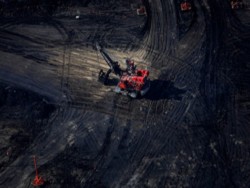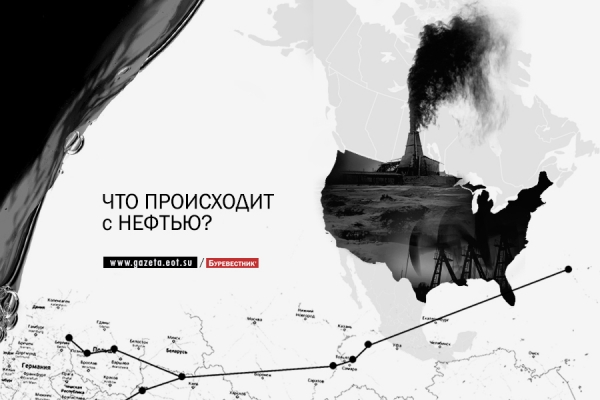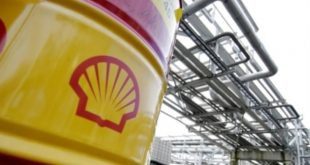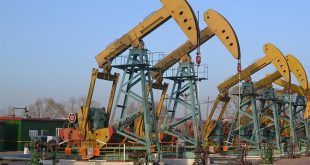
Cheap oil destroyed the plans not only of the Russian government and the shale companies in the United States.
The fall in oil prices, as a rule, is perceived as a problem of major fuel exporters such as Russia or OPEC countries. The last six months and a lot of talk about the hard situation of shale producers in the US. But losses are the countries that to a lesser extent associated with the oil market. Canada has huge proven oil reserves – 172 billion barrels (almost twice more than Russia – 80 billion). The canadian dollar is a “commodity currency”, because its rate depends largely on the situation on the oil market.
Feature of canadian hydrocarbons is that they are “unconventional” and roads in the development.
If to many fields of Persian Gulf oil lies near the surface and is “sweet and light”, with low density and low sulfur content, the oil reserves in Canada are bituminous, or neftyanka.
During your stay in calgary, Alberta, oil and gas capital of Canada, this writer was able to see for myself the scale of the crisis. While large and medium-sized companies laying off employees, smaller companies go bankrupt. Budgets utrambovyvaya.
Oil Sands – canadian main wealth is a mixture of sand, water, clay and bitumen-containing, therefore, required expensive and time-consuming process of processing of raw materials before sending it to the refinery. The usual composition of sand like this: 83% sand, 10-12% bitumen, 4% water, 3% clay. This mixture is impossible to extract and transport conventional methods, it requires a special infrastructure. And only economies of scale and high raw material prices have made the development of such fields more or less profitable.
American multinational companies have invested in the oil Sands of Alberta to more than $50 billion.
The largest deposits are found in the inner parts of the country and for the transportation of oil piping. TRANS mountain pipeline (Trans Mountain Pipeline) owned by pipeline giant Kinder Morgan is responsible for the delivery of oil from Edmonton, Alberta, to the Pacific ocean in Vancouver, and from there to Asia.
In 2013, amid growing demand for energy, the management of the company Trans Mountain thinking about the next expansion of pipeline capacity from 300,000 barrels per day to 890,000. However, residents of British Columbia – the province, which is the end point on the way to Asia, don’t want the new pipe passed them “in the yard”. Especially loudly protested the representatives of the first Nations — Indian tribes, whose territories have the status of a virtually independent mini-States.
Now to the concerns for the environment, traditionally strong in liberal Victoria (capital of British Columbia) and Vancouver hipster, increased doubts about the profitability of the project. The expansion will require nearly $5.5 billion investment that is seen as a luxury in conditions of low oil prices.
Environmental factor, but on the part of the American establishment, especially President Barack Obama, put an end to the project, another pipeline that would be key for the canadian oil industry. This is emphasized even in the title is the Keystone XL. If it is implemented, oil from Alberta would find a way to refineries on the Gulf coast and then to Europe and South America.
However, the shale boom in the U.S., hard criticism from “green” donors of the Democratic party, and then the drop in oil prices reduced the importance of “key” project for Canada and the USA, where previously hoped to create thousands of jobs by building the Keystone XL.
However, in 2010 was launched the oil pipeline “Alberta Clipper” (Alberta Clipper), which performs the same function — transporting canadian heavy oil in the USA, albeit in a different route. Relatively low-capacity “Clipper” stay away from scandals with Keystone XL, but now stopped working on its extension.
Added problems and differences of view among the leaders of the United States and Canada. 2015 canadian Prime Minister was the conservative Stephen Harper, is widely supported an increase in oil exports – including through the construction of oil pipelines in the United States. Left liberal Barack Obama has adopted a totally different attitude.
New left-liberal government of Justin Trudeau, who came to power at the end of 2015, trying to find a common language with Obama. But now the power shift is waiting for US and not the fact that the new occupant of the White House will continue the policy of the current President.
For example, Hillary Clinton, during operation of the Secretary of state, endorsed Keystone XL.
Hopes for exports of canadian natural gas is also not justified. U.S. consumers actively switched to gas from shale deposits, and overseas markets remains Canada’s almost unattainable due to the lack of adequate facilities for processing and transportation of LNG.
The only terminal located on the Atlantic coast in St. John, in the province of new-Brunswick, was built to import liquefied gas, but can now be adapted for export (8 billion cubic meters per year). He is able to secure supplies to consumers in Europe. To meet demand in Asian markets necessary terminals on the West coast, the construction of which rests on the opposition of the authorities and the public, including Indians, and a negative situation on the market. Sixteen of planned terminals in British Columbia while waiting their hour.
The export of energy resources is vital for a country such as Canada. However, the market situation does not allow canadian energy leaders to take long-term decisions.






